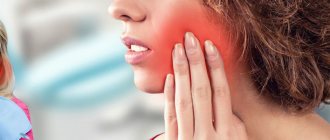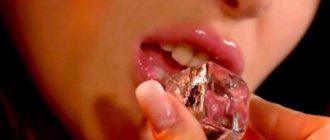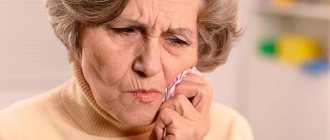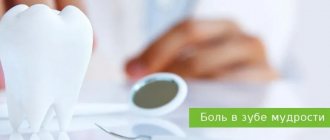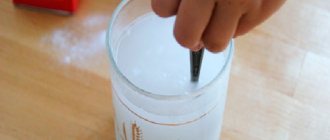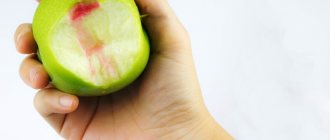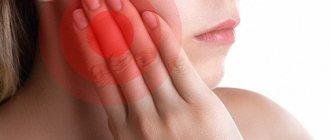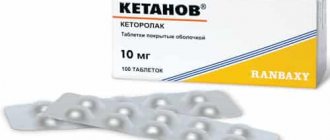No-Shpa is an antispasmodic drug that has been produced for over 60 years and has many positive reviews from consumers. It is very popular in the CIS countries, Eastern Europe and Asia. According to English-language sources, the main active component of this medicine, drotaverine, is mainly used intravenously to relieve pain during labor. Numerous studies have shown that drotaverine is effective in various situations and take No-Shpu with:
- menstruation;
- stomach cramps;
- headache.
The drug is also completely safe for children. Let's consider all the features of But Shpa : method of use, contraindications, how it affects the body and how it interacts with other medications.
Compound
The main active ingredient contained in the drug is drotaverine. This substance is a modified papaverine, a painkiller made from the opium poppy.
1 tablet of No-Shpa contains:
- drotaverine hydrochloride – 40 mg;
- magnesium stearate – 3 mg;
- talc – 4 mg;
- povidone – 6 mg;
- corn starch – 35 mg;
- lactose monohydrate – 52 mg.
The dosage form of the drug is convex yellow tablets with a greenish or orange tint and “spa” engraving on one side.
Pharmacodynamics
The main component of the drug is drotaverine, which is an isoquinoline derivative. The substance has an antispasmodic effect, reduces the entry of Ca2 into smooth muscle cells, reduces intestinal motility and smooth muscle tone of internal organs, and dilates blood vessels. Does not affect the autonomic nervous system. Unlike papaverine, with which drotaverine is similar in chemical structure and pharmacological properties, it has a strong and long-lasting effect.
Drotaverine has a direct effect on smooth muscles, so it can be used in situations in which drugs from the M-anticholinergic group are contraindicated.
Pharmacological properties
No-spa is an antispasmodic drug. This remedy can be used during treatment and prevention for various pathological conditions, including the elimination of pain.
After taking one tablet, the active substance, drotaverine, is almost instantly absorbed into the blood. This component relieves spasms of muscle fibers, reduces the level of calcium ions, has a dilating effect on blood vessels and relieves the inflammatory process.
A painful spasm appears when the tone of smooth muscles increases. The active substance of the drug affects the enzyme, which is contained in smooth muscles and is responsible for their tone.
Relieving spasms No-Spa reduces pain
Since this remedy has an antispasmodic effect, it rarely helps with toothache. This is due to the fact that toothache usually occurs due to an inflammatory process. It is usually used to relieve pain due to uterine tone, intestinal colic, and during menstruation.
After taking the tablet, its effect begins within 15 minutes. The maximum effect is observed after 30-40 minutes.
The drug is excreted by the kidneys along with urine. Excretion occurs in the form of metabolites.
Indications and contraindications
| Indications | Contraindications |
| Pain due to diseases of the biliary tract | Kidney or liver failure |
| Stomach pain | Severe heart failure |
| Urinary tract spasms | Galactose intolerance, lactose deficiency |
| Tension headaches | Hypersensitivity to drotaverine |
| Menstrual pain | Intolerance to one of the excipients of the drug |
You should use No-Shpu with arterial hypotension especially carefully. One tablet of No-Shpa contains 104 mg of lactose, so people with lactose intolerance should limit their intake of No-Shpa to avoid problems with the gastrointestinal tract. Those suffering from galactosemia, lactose deficiency or glucose/galactose malabsorption syndrome should avoid taking this medicine.
No-shpa - a classic of antispasmodic therapy
Introduction
Abdominal pain, or abdominal pain, usually reflects a pathological process in the abdominal cavity. In its duration it can be acute or chronic. Based on the mechanisms of occurrence, the following types of abdominal pain can be distinguished :
Abdominal pain, or abdominal pain, usually reflects a pathological process in the abdominal cavity. In its duration it can be acute or chronic. Based on the mechanisms of occurrence, the following can be distinguished:
- spastic
(arising from spasms of the smooth muscles of the gastrointestinal tract), - distensional
(arising from stretching of the hollow organs of the abdominal cavity), - peritoneal
(associated with a pathological process in the peritoneum), - vascular
(associated with ischemia of the abdominal organs).
Thus, with diseases of the esophagus, stomach, and duodenum, pain is observed in the epigastric region. However, with myocardial infarction, lower lobe pneumonia, pleurisy, acute pyelonephritis, similar localization of pain may be observed.
In diseases of the biliary tract, gallbladder and liver, pain is most often noted in the right hypochondrium; with pancreatitis - often localized in the left hypochondrium (it should be remembered that pain in the right or left hypochondrium also accompanies lower lobe pleuropneumonia, renal colic, splenic infarction).
Pain in the umbilical area
are characteristic of diseases of the small intestine, and may also be associated with vascular damage, for example, an abdominal aortic aneurysm or a disorder of the mesenteric circulation.
Pain in the right iliac region
usually associated with disease of the cecum and appendix. Such pain can also accompany pathology of the ureter.
Pain in the left iliac region
, as a rule, are caused by pathology of the sigmoid colon, often by diverticulitis.
Pain in the suprapubic region
in most cases they are caused by pathological processes in the bladder, uterus and its appendages.
In addition to eliminating pain, relaxing the spasm is very important. Spasm
– pathological or physiological contraction of individual muscles or muscle groups (and sometimes many muscle groups) is an accompanying symptom of many diseases. It impairs the blood supply to the affected area, and in itself can be the beginning of the development of a pathological condition.
As is known, the state of the contractile apparatus of a muscle cell is directly dependent on the concentration of calcium ions in the cytoplasm. The latter, interacting with the cytoplasmic calcium-binding protein calmodulin, activate myosin light chain kinase. The kinase cleaves the phosphorus residue from the adenosine triphosphate molecule associated with the fibers of the myosin motor protein. Thanks to this, myosin acquires the ability to interact with another motor protein, actin. Active “molecular” bridges are established between actin and myosin, due to which actin and myosin “move” relative to each other, which leads to cell shortening.
Molecules of cyclic adenosine monophosphate (cAMP) and cyclic guanosine monophosphate (cGMP) reduce the content of calcium ions in the cytoplasm and thereby contribute to a decrease in the contractile activity of the cell.
Cyclic forms of AMP and GMP are formed from inactive monophosphates. The enzyme phosphodiesterase catalyzes the breakdown of cyclic AMP and GMP to inactive forms. Thus, one of the necessary conditions for muscle fiber contraction is high phosphodiesterase activity; for relaxation, on the contrary, its low activity is needed.
What are the possibilities for therapeutic relief and prevention of attacks of abdominal pain?
Today, the following groups of drugs are used: nitrates, anticholinergics, calcium antagonists, b-agonists used in the treatment of bronchial asthma and myotropic antispasmodics - the most effective group for abdominal pain caused by spasm.
The main range of uses of antispasmodics
in everyday practice:
- Symptomatic treatment if spasm is a characteristic accompanying symptom of the disease, but does not play a role in pathogenesis.
- The antispasmodic is used as a means of etiotropic therapy if spasm underlies the pathological condition.
- Antispasmodics are used as premedication in preparing patients for various procedures, for example, ureteral catheterization, etc.
Mechanism of action of antispasmodics
Depending on the mechanisms of action, antispasmodics are divided into two groups: neurotropic and myotropic.
Neurotropic antispasmodics
act by disrupting the transmission of nerve impulses in the autonomic ganglia or nerve endings that stimulate smooth muscles.
Myotropic antispasmodics
reduce muscle tone due to a direct effect on biochemical intracellular processes.
The most important neurotropic antispasmodics are M-anticholinergic blockers.
M-anticholinergic agents (atropine-like drugs) have an antispasmodic effect in the upper gastrointestinal tract (GIT): they are 3–10 times more effective on the stomach than on the colon. Firstly, this is due to the unequal distribution density of M-cholinergic receptors in the gastrointestinal tract (the largest number of them is located in the stomach). Next in descending order are the colon, rectum, cecum, jejunum and duodenum. Secondly, the tone of the colon wall is regulated by the sacral parasympathetic nerve, which is resistant to the action of anticholinergic drugs. In addition, only 20–40% of contractions of the muscles of the colon are carried out through M-cholinergic receptors. Most contractions are activated by noncholinergic transmitters. This explains the limited effectiveness of anticholinergic drugs for spastic phenomena in the lower gastrointestinal tract.
Side effects of M-anticholinergics include a decrease in the secretion of various exocrine glands (salivary, mucous, sweat), HCl in the stomach, an increase in heart rate, mydriasis, paralysis of accommodation and an increase in intraocular pressure.
M-anticholinergic drugs according to their chemical structure are divided into tertiary, penetrating the blood-brain barrier and having a central effect (atropine, scopolamine, platyphylline), and quaternary ammonium compounds that do not penetrate the blood-brain barrier (methacin, chlorosyl).
The number of side effects and low antispasmodic activity make the use of atropine-like drugs very limited.
The first truly effective myotropic antispasmodic drugs were opium extracts. The further development of their use was driven by the knowledge that among opium alkaloids, papaverine is the drug that has the most pronounced antispasmodic effect on smooth muscles and the least effect on the central nervous system. Production of the drug in industrial quantities in the form of hydrochloric acid salt was carried out in 1930 at. In 1931, by replacing the methoxy groups of papaverine with ethoxy radicals, the drug perparin was developed with a stronger antispasmodic effect than papaverine, but less absorbable. Research continued with the goal of obtaining a more effective myotropic antispasmodic than papaverine, and, if possible, without side effects. Finally, in 1961, Meszaros, Szentmiklosi and Czibula developed hydrogenated derivatives of papaverine, namely drotaverine
, which received the trade name
“No-shpa”
. All pharmacological and clinical studies have proven the higher effectiveness of drotaverine in comparison with papaverine.
Myotropic antispasmodics exhibit a certain tropism for individual smooth muscle organs. Among them are bronchodilators, vasodilators, and gastrointestinal antispasmodics. They reduce the tone of smooth muscle cells by directly influencing biochemical intracellular processes, either leading to an increase in intracellular cAMP or a decrease in intracellular cGMP. cAMP activates the release of Ca2+ ions from the cell and its deposition, which leads to a decrease in cell contractility. cGMP, on the contrary, increases the contractility of smooth muscle cells due to stimulation of the release of Ca2+ ions from intracellular stores.
Antispasmodics with myotropic action also include calcium antagonists.
The muscle cell of the intestinal wall carries out its contractility with the help of Ca2+ ions. There are two possible ways for Ca2+ ions to enter the cell:
entry of Ca2+ from the extracellular space through slow voltage-dependent Ca2+ channels of membranes and release of Ca2+ from intracellular stores through receptor-dependent Ca2+ channels. There are two types of contractions of intestinal smooth muscles: tonic and phasic. Tonic contractions maintain the basal tone of the intestinal wall and sphincters during fasting; phasic contractions are rhythmic contractions of the intestinal wall that provide propulsive movement of food through the intestines. The mechanism of development of tonic and phasic contractions depends on different levels of Ca2+ ions entering the cells. The entry of Ca2+ ions into the cell through Ca2+ channels causes tonic contraction; mobilization of Ca2+ under the influence of neurotransmitters (acetylcholine, catecholamines) from dense Ca2+ stores, for example, the sarcoplasmic reticulum, leads to phasic contraction. The number of intracellular depots in the gastrointestinal tract varies: most of them are localized in the smooth muscles of the colon, least of all in the duodenum and small intestine.
The action of calcium antagonists is associated with blocking slow voltage-dependent Ca2+ channels in the smooth muscles of the gastrointestinal tract. These drugs have little effect on receptor-dependent Ca2+ channels and cannot block the release of Ca2+ from the depot, therefore they have an antispasmodic effect mainly in the upper gastrointestinal tract.
Mechanism of action of drotaverine
Phosphodiesterase inhibition
Phosphodiesterase inhibition
Adenosine 3'-5'-cyclomonophosphate (cAMP) and guanosine 3'-5'-cyclomonophosphate (cGMP) play an important role in the regulation of smooth muscle cell tone. An increase in the concentration of these substances is directly related to muscle relaxation.
The intracellular concentration of cyclic nucleotides is determined by the relative rate of their formation with the help of agonist-induced stimulation of adenylate cyclase (agonist - norepinephrine) and guanylate cyclase (agonist - acetylcholine), as well as the rate of their hydrolysis by cell phosphodiesterase enzymes (PDE).
cAMP and cGMP are synthesized from the corresponding nucleoside triphosphates using the membrane-bound enzymes adenylate cyclase and guanylate cyclase, respectively, cAMP and cGMP are inactivated by PDE to inactive non-cyclic ribose phosphates.
The adenylate cyclase system is universal, and cAMP and cGMP are the most important intracellular second messengers for smooth muscle cells of various organs (smooth muscles of the gastrointestinal tract, trachea, bronchi, uterus, ureters, blood vessels, myocardium), as well as for cells of other tissues (platelets, lymphocytes, secretory cells , CNS, etc.). The system provides various functions (muscle tone, secretion, aggregation, etc.). The wide range of functions of the adenylate cyclase system is ensured by the existence of numerous PDE isoenzymes in various types of tissues (tissue-specific and species-specific). PDE isoenzymes differ in physical and kinetic characteristics, substrate (cAMP or cGMP) specificity, sensitivity to endogenous activators and inhibitors, sensitivity to phosphorylation by protein kinases, tissue distribution and cellular localization. Thus, differences in the intracellular distribution of PDE isoenzymes are an important factor determining their individual regulatory role. According to a series of experimental studies, about 7 different families of PDEs have been established: Ca2+-calmodulin-dependent (PDE I), cGMP-stimulated (PDE II), c-GMP-inhibited (PDE III), cAMP-specific (PDE IV), cGMP- specific (PDE V), photospecific (PDE VI), high-affinity (resistant) (PDE VII).
Thus, PDE plays a major role in the regulation of smooth muscle tone
and represents a convenient cellular target for drug development.
PDE isolated from various tissues contain all isoenzymes, but in different quantities. Experimental studies have established the most significant types of PDE in different tissues and created selective PDE inhibitors. Thus, the selective PDE III inhibitor milrinone, the selective PDE IV inhibitor rolipram, and the selective PDE V inhibitor zaprinast are known. Milrinone is a non-catecholamine inotropic for cardiomyocytes and causes relaxation of vascular smooth muscle; Rolipram, according to initial data, was an inhibitor of brain PDE, and then its effect was shown on PDE IV of the respiratory tract muscles, liver cells, and lymphocytes. Research results have shown that the smooth muscle of the large intestine contains almost all isoforms of PDE, the main one of which is PDE IV.
In smooth muscle cells of the urinary tract, the existence of at least three different isoforms (I, II, IV) has been found, but PDE IV also predominates.
Myometrium during pregnancy contains large doses of PDE IV (50%) and PDE III (10%). PDE IV is found both in the initial period of pregnancy and in the last trimester. It is assumed that PDE IV at the end of pregnancy contributes (through changes in cAMP levels) to the preparation of the myometrium for childbirth. Studies in the isolated uterus have shown that selective PDE IV inhibitors can reduce the sensitivity of the organ to oxytocin and lead to rapid relaxation of the uterus after the application of maximum concentrations of oxytocin. This phenomenon can be used for premature birth.
Drotaverine and its main metabolites (CH 280895 and CH 281095) are strong and selective inhibitors of PDE IV smooth muscle cells. Thanks to the effects of drotaverine, not only an antispasmodic effect is provided, but also swelling and inflammation are reduced, in the pathogenesis of which PDE IV is also involved.
Action as a calcium antagonist
Smooth muscle contraction is a Ca2+-dependent process. The contractile process is initiated by any stimulus that causes an increase in the concentration of Ca2+ ions in the cytosol. Ca2+ ions required for contraction can come from an extracellular source through transmembrane Ca2+ channels, or intracellular cytoplasmic organelles (sarcoplasmic reticulum, mitochondria). Ca2+ channel antagonist drugs inhibit the penetration of Ca2+ ions from the extracellular space, which prevents spasm and promotes relaxation of smooth muscles. This is what determines the value of this class of drugs. This mechanism is especially useful in the treatment of cardiovascular diseases, including cardiac arrhythmia, angina pectoris, and hypertension.
Another class of Ca2+ antagonists are drugs that interact with calmodulin, a cytoplasmic Ca2+-modulating protein. Calmodulin functions as a necessary mediator of the action of Ca2+ ions in Ca2+-dependent intracellular processes: with an increase in the concentration of Ca2+ ions in a stimulated cell, calmodulin binds them, which leads to a conformational change in the calmodulin molecule, and it acquires the ability to bind to the actin-myosin contractile system.
Calmodulin antagonists prevent the formation of the active Ca2+–calmodulin complex and thus inactivate the enzyme. In addition, calmodulin antagonists are able to inhibit calmodulin-dependent PDEs, some of which affect the function of Ca2+ channels. Drotaverine and papaverine have virtually no effect on calmodulin-dependent type I PDEs. According to experimental studies, drotaverine has weak activity as a calmodulin antagonist and significant activity as a Ca2+ antagonist. Papaverine is 5 times stronger than drotaverine as a calmodulin antagonist, and does not exhibit the properties of a Ca2+ antagonist. Due to its special properties, drotaverine is classified, according to the classification of Ca2+ antagonists, in group III - calmodulin antagonists.
Sodium channel blocking effect
Sodium channels play a fundamental role in the generation and conduction of electrical stimuli and may be involved in the pathogenesis of many diseases. Binding sites for drugs have been identified on sodium channels. Na+ channel blockers are widely used as antiarrhythmics, antiepileptics and local anesthetics. Experimental studies have shown that drotaverine has an affinity for Na+ channels; its activity towards Na+ channels is 10 times higher than towards Ca2+ channels.
Drotaverine is an effective antispasmodic drug without cardiovascular effect
. PDE is an enzyme that hydrolyzes cAMP in cardiomyocytes and vascular smooth muscle cells, represented predominantly by type III PDE. cAMP is synthesized through stimulation of b1- and b2-adrenergic receptors, which activate membrane-bound adenylate cyclase. Elevated levels of intracellular cAMP in cardiomyocytes increase intracellular Ca2+ levels through activation of protein kinase, which phosphorylates proteins in the sarcolemma and sarcoplasmic reticulum. During the period of depolarization, Ca2+ channels open, through which Ca2+ enters the cell and activates contractile proteins. Intracellular cAMP is metabolized by PDE III, and inhibition of this enzyme increases the level of cAMP, which leads to an increase in intracellular Ca2+ concentration. An increase in intracellular Ca2+ concentration in myocardiocytes causes a positive inotropic effect. Elevated levels of intracellular cAMP and Ca2+ may also cause electrophysiological effects. Vascular smooth muscle cells also contain PDE III; inhibition of this enzyme and the resulting increase in cAMP levels causes relaxation of the smooth muscle cells of the vascular wall. This is achieved by depositing Ca2+ ions in the sarcoplasmic reticulum.
PDE III inhibitors may cause arrhythmias that occur due to an increase in intracellular cAMP levels and, consequently, an increase in Ca2+ levels in cardiomyocytes. Not only PDE III inhibitors, but also PDE V inhibitors have a pronounced cardiovascular effect.
Since drotaverine is a selective inhibitor of PDE IV and an antagonist of the action of Ca2+, its cardiovascular effect is weakly expressed.
Pharmacokinetics of drotaverine
Absorption
The peak concentration of drotaverine in plasma occurs between 45 and 60 minutes after administration, which characterizes it as a rapidly absorbed drug. After a single oral dose of 80 mg of drotaverine hydrochloride, the maximum plasma concentration of the parent compound (136–320 ng/ml) is achieved after 2 hours. The bioavailability of drotaverine when taken orally is 60%.
Drotaverine binds to plasma proteins (95–98%), especially albumin, b- and g-fractions of globulins and a-lipoproteins.
The drug penetrates well into various tissues: the central nervous system, adipose tissue, myocardium, lungs, kidneys, liver, walls of the urinary and gallbladder, intestines, vascular wall.
Removal
The half-life is 16 hours. About 60% of drotaverine when taken orally is excreted through the gastrointestinal tract and up to 25% in the urine.
Metabolism
The main metabolic pathway of drotaverine is oxidation. The drug is metabolized almost completely to monophenolic compounds. Its metabolites are rapidly conjugated with glucuronic acid.
Application of drotaverine
Many of the symptoms encountered by therapists and gastroenterologists are explained by a disorder of contraction of the smooth muscles of the gastrointestinal tract. Symptoms of spastic gastrointestinal dysfunction occur in almost 30% of healthy people. The majority of patients seeking consultation with a doctor suffer from various functional gastrointestinal disorders. First of all, these are non-ulcer dyspepsia and irritable bowel syndrome. Understanding the pathophysiology of visceral spasm may facilitate rational treatment approaches. Drotaverine is effective in the treatment of various gastrointestinal diseases characterized by spasm of smooth muscles.
Dosage forms of drotaverine (No-shpy)
1 ampoule of No-shpa (2 ml) contains 40 mg of drotaverine
1 tablet of No-shpa contains 40 mg of drotaverine
1 tablet of No-shpa forte contains 80 mg of drotaverine
Esophageal smooth muscle spasm
The main symptoms associated with spastic esophageal dysfunction are dysphagia and chest pain
.
Dysphagia is a feeling of slowness or obstruction in the movement of food through the pharynx and esophagus into the stomach.
Functional dysphagia develops due to impaired swallowing and decreased peristaltic activity of the esophagus due to pathology of its striated and smooth muscles. The most significant diseases of this group are achalasia, diffuse esophageal spasm and gastroesophageal reflux.
Chest pain in gastrointestinal diseases is spastic in nature, highly intense, localized in the middle third of the sternum and often radiates to the anterior surface of the chest. Such pain occurs with hypermotor dyskinesia of the thoracic esophagus (esophagospasm) and is a consequence of a violation of the peristaltic function of the smooth muscles of its wall. Pain can appear during eating or at any other time.
To treat dysphagia and pain associated with spastic dysfunction of the esophagus, nitrates, anticholinergic drugs, antispasmodics from the group of phosphodiesterase inhibitors and calcium antagonists (drotaverine) are used. They lead to a decrease in pressure in the esophagus. However, no drug alone provides complete effectiveness in the treatment of spastic disorders of the esophagus.
Non-ulcer dyspepsia
The term “non-ulcer dyspepsia” refers to a symptom complex that includes complaints of pain in the epigastric region, a feeling of heaviness and fullness in the epigastrium after eating, early satiety, nausea and vomiting, belching of air, heartburn, regurgitation, etc. Synonyms of this term are functional, idiopathic, inorganic dyspepsia. During a thorough examination, it is not possible to identify any organic disease (peptic ulcer, reflux esophagitis, stomach cancer, etc.). The prevalence of dyspeptic complaints among the population is very high - from 19 to 41% according to different authors, while from a third to half of all cases of dyspeptic disorders account for functional dyspepsia.
Depending on the main clinical symptoms, there are four types of non-ulcer dyspepsia:
ulcer-like, reflux-like, dyskinetic and nonspecific.
The leading place in the pathogenesis of non-ulcer dyspepsia is given to motility disorders of the upper gastrointestinal tract.
Treatment of patients includes a healthy lifestyle, prevention of infection with Helicobacter pyloricus, the use of antacids and antispasmodics for ulcer-like variants (especially when pylorospasm and hypermotor dyskinesia of the duodenum are detected). For reflux-like and dyskinetic variants, prokinetics are used.
Sphincter of Oddi dysfunction
Many other terms have been used to describe this functional biliary disorder: biliary dyskinesia, hypertensive sphincter of Oddi dyskinesia, spasm of the sphincter of Oddi, papillary dysfunction.
Disorders and the mechanism of development of pain with dysfunction of the sphincter of Oddi is the development of spasm of sphincter muscle fibers and increased pressure in the bile and/or pancreatic duct system.
The fact that dysfunction of the sphincter of Oddi most often manifests itself in patients with a removed gallbladder serves as indirect confirmation that the gallbladder serves as a reservoir that “quenches” excessive pressure surges throughout the biliary tract. After removal of the gallbladder, even a moderate contraction of the sphincter of Oddi can lead to a significant increase in pressure in the entire biliary tract and, as a result, pain may appear, as confirmed in experiments with the administration of morphine, which increases pressure in the biliary tract.
The factors that cause prolonged spasms of the sphincter of Oddi are unknown.
For therapeutic purposes, myotropic antispasmodics are most often used in practice, having a targeted effect on smooth myocytes of the gastrointestinal tract.
The main representatives of this group of drugs are drotaverine (No-shpa, No-shpa forte), otilonium bromide, etc. These drugs are used short-term (from a single dose to two to three weeks) to relieve spasm, and therefore pain.
In a double-blind, placebo-controlled clinical trial, the effectiveness of No-shpa was studied in patients with sphincter of Oddi stenosis as an adjuvant, including in patients with surgical interventions. The use of No-shpa showed a significant significant reduction in pain in 60% of patients and a small effect in another 23%
, while placebo in 55% of cases did not affect the intensity of pain. In this study, No-shpa was 2 times more effective than analgesics.
In addition, in a pilot study it was found that the use of No-shpa reduces AST activity by 15–60% in patients with diseases of the biliary system
.
The results of these studies showed that No-shpa is the drug of choice for spasms of the smooth muscles of the biliary system. No-shpa can be used both in monotherapy and in combination with antibiotics and surgical treatment methods.
Irritable bowel syndrome
Symptoms of hypertensive lower gastrointestinal motility disorder include constipation, with or without lower abdominal pain. Most often, patients with such symptoms are diagnosed with irritable bowel syndrome and chronic constipation.
Irritable bowel syndrome (IBS) is a common clinical problem encountered by emergency physicians and gastroenterologists. IBS is one of the manifestations of functional disorders of the gastrointestinal tract, in which the colon is predominantly involved in the pathological process. IBS is characterized mainly by disturbances in the motor and secretory function of the colon without morphological changes in the mucous membrane.
Epidemiological studies indicate a high incidence of the disease in the general population: 14–24% of women and 5–19% of men. IBS is a biopsychosocial disorder in which abnormalities in psychoemotional order, motor skills and sensitivity lead to abdominal pain and defecation disorders. To evaluate symptoms, a unified set of criteria, the Rome Diagnostic Criteria, is used.
Principles of IBS treatment
include normalization of the diet and nature of nutrition, normalization of the psycho-emotional sphere, correction of movement disorders of the colon. In case of IBS, which occurs predominantly with pain, the optimal prescription should be considered drugs that have an antispasmodic effect (drotaverine, pinaverium bromide, butylscopolamine).
Several clinical studies have been conducted to evaluate the effectiveness and tolerability of No-shpa in patients with irritable bowel syndrome and other intestinal disorders.
A double-blind, randomized, placebo-controlled study included 62 patients (age 50.8±14.2 years) with IBS and constipation. Patients recorded their complaints daily for 2 weeks before the start of treatment and during 8 weeks of treatment with No-shpa 80 mg 3 times a day or 2 placebo tablets 3 times a day. Active treatment significantly reduced abdominal pain by 47%, while in the placebo group pain increased by 3% (p < 0.05). While taking No-shpa, other symptoms, including flatulence, also decreased.
In another randomized, double-blind study, the effectiveness of No-shpa was studied in 70 patients aged 18–60 years diagnosed with IBS according to their own criteria. Patients received No-shpa 80 mg 3 times a day for 4 weeks, and then were observed for another 4 weeks. The results showed that No-shpa significantly reduces the incidence of pain compared to placebo – by 47% (p<0.001) (Fig. 1), flatulence by 21% (Fig. 2) and dyspepsia – by 20% (p<0.001) (Fig. 3). At the same time, normalization of stool frequency occurred in 40% of patients receiving No-shpa and placebo, but an improvement in passage time in the colon was noted significantly more often with the use of No-shpa (Fig. 4 and 5).
Rice. 1. Frequency of abdominal pain syndrome while taking No-shpa and placebo
Rice. 2. Frequency of flatulence while taking No-shpa and placebo
Rice. 3. Frequency of dyspepsia while taking No-shpa and placebo
Rice. 4. Frequency of constipation while taking No-shpa and placebo
Rice.
5. Change in passage time in the colon while taking No-shpa and placebo Chronic constipation
Constipation is a very common complaint. Constipation can be caused by a variety of factors affecting smooth or striated muscle, impairing the function of autonomic or somatic nerves, or factors associated with changes in colorectal anatomy or intestinal contents.
Constipation is a very common complaint. Constipation can be caused by a variety of factors affecting smooth or striated muscle, impairing the function of autonomic or somatic nerves, or factors associated with changes in colorectal anatomy or intestinal contents.
Among the diseases that cause secondary constipation are systemic endocrine and metabolic diseases, disorders and diseases of the central nervous system (damage to the spinal cord, peripheral nerves), as well as myopathy and muscular dystrophy. Constipation can be caused by a number of drugs belonging to different groups, including drugs that interact with neurons of the central nervous system (eg, opiates), drugs that directly affect smooth muscle (calcium antagonists), and drugs that alter the contents of the intestines (cholestyramine). Habitual consumption of low-fiber foods can lead to infrequent bowel movements and complaints of constipation.
In the treatment of constipation, a diet with a high content of fiber and cellulose, various laxatives and medications that improve the neuromuscular regulation of motor function of the colon (prokinetics) or antispasmodics are used. Drugs that activate intestinal motility, in combination with antispasmodics, help avoid the use of toxic laxatives.
Conclusion
Pain is a universal symptom for a wide variety of lesions of the gastrointestinal tract; its occurrence is often based on spasm of the smooth muscles of the abdominal organs. Of the entire group of antispasmodic drugs, the most popular today is drotaverine (No-shpa)
.
A review of the results of clinical studies shows that No-shpa is an effective drug for the rapid relief of spasms and pain. For a quick onset of effect, the first administration of No-shpa should be intravenous or intramuscular; for long-term treatment, it should be administered orally. Literature:
1. Belousov Yu. B. Antispasmodics. Pharm. Bulletin, 36 (235, 2001).
2. Belousov Yu. B., Leonova M. V. Clinical pharmacology of no-shpa. Methodological manual for doctors. M., 2002.
3. “Gastroenterology” Directory. P/r V. T. Ivashkin and S. I. Rappoport. M., Russian doctor, 1998, pp. 84–90
4. Grigoriev P. Ya., Yakovenko E. P., Pryanishnikova A. S. et al. The place of the drug No-shpa forte in the management of patients with abdominal pain syndrome. Practitioner, 16 (3, 1999), pp.39–40
5. Ivashkin V. T., Shulpekova Yu. O., Drapkina O. M. Abdominal pain syndrome. Submitted for publication in the Russian Journal of Gastroenterology, Hepatology and Coloproctology.
6. Leonova M.V., Shishkina T.I., Belousov Yu.B. New dosage form No-shpa forte in clinical practice.
7. Akos Pap MD The management of smooth muscle spasm. Budapest, 1998, 266 p.
8. Blasko G. Pharmacology, mechanism of action and clinical significance of a convenient antispasmodic agent: drotaverine. JAMA India – The physician's update, 1998, v.1, N 6, p.63–70.
9. Kapui Z., Bence J., Boronkay E. et al. Behavioral effects of selective PDE4 inhibitors in relation to inhibition of catalytic activity and competition for [3H]rolipram binding. Neurobiology, 1999, v.7, N 1, p.71–73.
Instructions for use
No spa tablets: instructions for use for adults: take 1-2 tablets at a time 2-3 times a day. The maximum dose of the drug is 6 tablets (240 mg of drotaverine) per day. You can take No-Shpa without a doctor’s prescription for 1-2 days; if it is used for auxiliary therapy, then 2-3 days.
Clinical studies of the active substance with the participation of children have not been conducted. If this drug is prescribed to children, it should be taken as follows:
- From 6 to 12 years – 1 tablet 1-2 times a day, maximum dose – 80 mg of drotaverine (2 tablets).
- 12 years and older - 1 tablet 1-4 times a day or 2 tablets 1-2 times a day, maximum dose of drotaverine - 160 mg (4 tablets).
The pain disappears a few hours after taking No-Shpa. If this does not happen, it is recommended to consult a doctor.
Side effects
The body may react adversely to the components of the drug. Possible symptoms include:
- Nervous system: headache, dizziness, sleep disorder, vertigo.
- Cardiovascular system: decreased blood pressure, palpitations.
- Digestive system: nausea, constipation.
- Immune system: allergic reactions (rash, itching, urticaria).
All side effects of the drug are rarely detected: approximately 1 case in 10,000.
An overdose of No-Spa causes cardiac rhythm and conduction problems, which can lead to drug failure and death. In case of an overdose of the drug, you should immediately consult a doctor and subsequently receive symptomatic treatment under his supervision.
Use of folk remedies
If No-spa does not help eliminate tooth pain, and other remedies are not at hand, then you can use home remedies.
In addition to medications, folk remedies are widely used to relieve toothache.
In order to quickly eliminate pain in the tooth, you can use the following methods:
- Rinse with a solution of baking soda and iodine. In a glass of boiled water, you need to dilute 1 large spoon of soda and add 1 teaspoon of iodine. Next, you need to rinse your mouth with this solution. As a result, soda and iodine will have an antiseptic effect and help slightly reduce discomfort.
- Using garlic. To do this, the garlic must be rubbed into a paste and applied to the sore tooth. The action will be immediate. Garlic reduces pain for up to several hours
- Treatment of the gums near the diseased tooth with propolis tincture. This remedy causes numbness, thereby reducing the intensity of pain. But it should be used carefully so as not to accidentally burn the mucous layer of the oral cavity.
In any case, you should immediately consult a doctor. A specialist will be able to accurately identify the cause of discomfort and will be able to provide appropriate treatment. If necessary, the dentist will be able to prescribe an effective analgesic.
Pregnancy and lactation
Clinical studies have shown that drotaverine does not have a teratogenic or embryotoxic effect, therefore its use during pregnancy is allowed . It is important to be careful and take drotaverine only after weighing the benefits for the mother and the potential risk for the child. There are no preclinical and clinical data on the use of the drug during lactation, therefore, taking No Shpu while breastfeeding is not recommended .
How to relieve toothache at home for a pregnant woman?
When planning a new addition to the family, it is advisable for the expectant mother to visit the dentist in advance and have caries treated or teeth removed. But even a prudent woman cannot completely get rid of the risk of the sudden appearance of unpleasant sensations. Painkillers for toothache for pregnant women:
- No-spa (drotaverine) is an antispasmodic that provides temporary relief and promotes vasodilation. This drug is one of the few approved during pregnancy.
- Paracetamol is a popular and effective pain reliever that can be taken for high fever and headache. Does not have a negative effect on the fetus. Approved for occasional use.
- Nurofen is a pain reliever that helps calm discomfort in the first and second trimester. It should be used in extreme cases. In the last trimester, Nurofen should not be taken due to the risk of miscarriage. The drug provokes premature contractions of the uterus.
IMPORTANT: before taking an anesthetic, a pregnant woman should consult her gynecologist and not self-medicate.
During menstruation
The peculiarity of drotaverine, which is part of No Shpa, is that it relaxes the smooth muscles of various organs, including the uterus. It relieves spasms and improves blood flow, which helps get rid of painful sensations. The drug is taken 1-2 pills 2-3 times a day for 1-2 days or until the pain disappears. The maximum dosage of no spa is 2 tablets at a time. Note! But Shpu should be taken during menstruation only if you are sure that this is pain during a natural process.
Pain mistaken for toothache
Diseases and conditions in which pain can be mistaken for dental pain . These are mainly diseases of related areas (paranasal sinuses, organs of vision and hearing, pharynx, cervical vertebrae, brain); The cause may also be diseases of the heart and blood vessels, the musculoskeletal system (spine), the nervous system, as well as mental disorders.
Trigeminal neuralgia. The trigeminal nerve is responsible for sensation in the face and mouth. When it is affected, the pain is very severe and similar to a toothache. Unfortunately, many patients with neuralgia have undergone numerous depulpations and tooth extractions, but continue to experience pain. Despite the patient’s confidence that the cause of the pain is the tooth, the dentist needs to correct the diagnosis and refer the patient to a neurologist. Another option is postherpetic neuralgia, which occurs in people who have had herpes zoster (shingles). Therefore, it is important to inform your dentist if itchy blisters have appeared on the skin and mucous membranes for some time, or this diagnosis has been made.
Cluster headache is a syndrome of unknown origin, characterized by acute, paroxysmal pain. Perhaps this is a form of migraine. Cluster headaches are more common in men aged 30-60 years. Many patients report pain after drinking alcohol.
In classic cases, there is unilateral pain in the upper jaw, maxillary sinus and behind the orbit. Cluster headache is often mistaken for acute pulpitis or periodontitis of the chewing teeth of the upper jaw.
Inflammation of the middle ear (otitis media) is a common disease, especially in children, caused by streptococci. It is well known that with diseases of the chewing teeth, pain can radiate to the ear area. Conversely, with inflammation of the middle ear, the symptoms shift to the back of the upper and lower jaws. After diagnosis, the patient is referred to an otolaryngologist.
Acute maxillary sinusitis (sinusitis). The roots of the teeth of the upper jaw are adjacent to the bottom of the sinus, so inflammation often imitates toothache. Most forms of sinusitis are allergic and are characterized by dull pain in the zygomatic region and alveolar process of the upper jaw.
In acute sinusitis, the pain can be stabbing, pressing, pulsating. Often it radiates to the infraorbital region, to the area of the upper jaw teeth. In this case, the pain is felt not in any one tooth, but in several. It is recommended to contact an ENT specialist.
Diseases of the paranasal sinuses are often chronic and allergic. They tend to be seasonal, because for most people allergens are seeds and pollen of various plants. In countries with a northern climate, the incidence of sinusitis increases in spring and autumn. The patient should be referred to an ENT specialist and an allergist.
Heart diseases. Angina is pain behind the sternum, which can radiate to the left shoulder and along the arm. The pain usually occurs after physical activity. These symptoms are extremely important, since angina pectoris is a harbinger of acute myocardial infarction. Sometimes the pain is felt only in the left shoulder and arm, and even less often in the left corner of the lower jaw.
So, if there are complaints of pain in the posterior part of the lower jaw on the left and there are no objective reasons from the teeth, we can assume the cardiac nature of the pain. In this case, the dentist will refer the patient for a consultation with a cardiologist or therapist.
Salivary stone disease develops in the duct of one of the salivary glands. For a long time, the only symptom was dry mouth. When the stone reaches a critical size, it clogs the salivary duct; toothache appears. Swelling may occur in the submandibular area. To make a diagnosis, several x-rays are taken. The treatment is carried out by a dental surgeon, it consists of making an incision in the duct and removing the stone under local anesthesia.
Pain of musculoskeletal origin can be caused by injury or dysfunction of the muscles of the neck, head, and jaws. Pain can be noted in the area of the teeth, cheek, temple, side of the neck, and back of the head. This group also includes diseases of the temporomandibular joint and the cervical spine. Other joint diseases (rheumatoid arthritis, gout, psoriasis; collagen diseases, or collagenoses) can cause pain in the maxillofacial area.
With internal dysfunction of the temporomandibular joint, complaints of toothache often arise. Joint dysfunction is caused by displacement of the articular disc, the formation of adhesions or due to various forms of arthritis, injuries, yawning, and prolonged opening of the mouth. Manifestations: the mouth does not open completely, when opening the lower jaw moves to the side, clicking or creaking in the joint, as well as pain in front of the tragus of the ear.
The pain is long-lasting, dull, muffled, but can become more acute when opening the mouth wide or chewing. In some cases, the pain radiates to the temple, cheek, and distal parts of the upper and lower jaws. In such cases, the patient may believe that he is experiencing toothache.
Tumors. Pain is rarely a symptom of malignant tumors in the jaw area. In typical cases, there are complaints of tingling or decreased sensitivity (numbness). Most tumors affect not only sensory but also motor nerves.
Atypical pain conditions masquerading as toothache are a group of syndromes that do not correspond to any specific disease. In this case, the patient is usually convinced that the cause of the pain is the teeth” and insists on their treatment or removal. Although the cause is unknown, many experts suggest the nervous system is involved. Atypical pain is usually chronic, aching; patients feel it deep inside the bone and have difficulty localizing it. Sometimes the pain seems to move from one area to another, and there may be complaints of pain throughout the body. The examination should include psychological screening and behavioral tests that assess depressive, anxious, and hostile behavior. It is possible that the primary cause of atypical pain is a psychological disorder. Consultation with a psychologist or psychiatrist is indicated.
Interaction with other drugs
PDE inhibitors like papaverine, which includes drotaverine, which is part of No-Shpa, weaken the antiparkinsonian effect of the substance levodopa (dihydroxyphenylalanine). Therefore, the combination of No Shpa and drugs containing levodopa can lead to increased tremor and rigidity. In combination with other antispasmodic drugs, No Shpa enhances its analgesic effect. Before combining this drug with other medications, you should consult your doctor.
What medications can it be used with?
In order for No-Spa to help eliminate severe pain, it can be used in conjunction with other analgesic drugs. In these cases, medications will enhance each other's effects, which will ultimately lead to the desired effect.
Injection of No-Spa together with other drugs significantly increases the effect of pain relief
What drugs can No-shpa be combined with:
- In order to eliminate aching pain, it is necessary to combine No-shpa and Analgin. These medications can be taken in tablet form. But for better effect they are used in the form of injections. A solution of both agents is mixed in equal parts and administered intravenously or intramuscularly.
- Injections of No-shpa and papaverine. These injections provide gentle relief from unpleasant feelings, temporarily calm you down, and allow you to sleep at night.
- If you have Analgin and Diphenhydramine in your medicine cabinet, then in these cases the use of No-shpa will not be necessary. When injections of Analgin and Diphenhydramine are administered, pain and inflammation are immediately relieved
Precautionary measures
No-Shpa contains disulfite, a substance that can cause allergic reactions, including anaphylactic symptoms and bronchospasm in people with hypersensitivity, especially in patients with asthma or allergic diseases. If you are sensitive to parenteral disulfite, you should not take the drug. When administering drotaverine intravenously, patients with low blood pressure should be in a horizontal position to minimize the risk of collapse.
Why does acute toothache occur?
Pain is almost always a symptom of an inflammatory process; it does not appear just like that. One of the most likely causes is pulpitis, which often follows untreated caries. With this disease, the pulp is inflamed - the soft tissue that fills the tooth cavity, which contains a lot of nerve endings. Hence the pain, which, as a rule, intensifies in a lying position, so attacks of acute pain often occur at night. With pulpitis, the pain is sharp, throbbing, it can radiate not only to neighboring teeth, but even to the ear or throat.
Another acute toothache is often a companion to periodontitis, that is, inflammation of the apex of the tooth root. In addition to painful sensations with periodontitis, the patient may be bothered by swelling of the gums, cysts, and purulent discharge. Acute pain occurs as a result of mechanical trauma to the tooth or tissues around it. Hyperesthesia or increased sensitivity of teeth also causes pain, which passes quickly enough, but brings a lot of inconvenience.
Effect on driving
When taken orally in small doses, No-Shpa has no effect on people driving or operating other equipment. However, during treatment with the drug when driving a vehicle or other activities that require increased concentration, you should be careful. If dizziness occurs after taking No-Shpa, then these types of activities should be abandoned. The question of whether it is possible to drive a car and operate machinery if there are side effects from using No-Shpa is decided by the attending physician.
Package
No-Shpa is available in the form of pills and solution for intravenous administration. Tablets of 40 or 80 mg are packaged in plastic blisters of 20 pieces. Each such tablet of medicine, along with instructions, is placed in a cardboard box. The packaging varies depending on the number of tablets inside:
- No. 12: 12 tablets per plate. 1 record per package.
- No. 24: 24 tablets per strip, 1 strip per package.
- No. 60: 60 tablets in a dosing container with protective tape, 1 container per box.
- No. 100: 100 ballet shoes per bottle, 1 bottle per package with a tamper-evident sticker.
The solution for injection is a clear, colorless liquid, which is collected in dark-colored ampoules of 2 ml, which are packed in 5 pieces in a plastic contour package.
Reviews
I was diagnosed with a stomach ulcer quite a long time ago, because of which I often have to suffer from pain in the stomach area. In such cases, I almost always use No-shpa - it is inexpensive and helps quickly - almost always everything goes away in 30 minutes. I did not find any side effects during use. I usually take 2 tablets after meals; if there are any special circumstances, I call my doctor, he will advise me on how to calculate the dosage.
Andrey, 37 years old
Excellent medicine, I have been using it for many years, I always have it on hand. When I take a severe headache along with analgin, they get along well, there are no side effects, and all the symptoms go away. In general, all relatives, when any pain or spasms appear, take noshpa, even my grandmother drinks for high blood pressure.
Irina, 29 years old
I most often take it for headaches, although it also helps with stomach and back pain. A doctor prescribed No-shpa to a friend for prostatitis, and my sister takes it for vegetative-vascular dystonia. It starts to work in about half an hour, not always the effect that we would like, but in terms of price/quality ratio it’s simply top!
Oleg, 26 years old
Question answer
Unlike analgesics, No-shpa eliminates the spasm that causes pain. The medicine has a high safety profile and is well tolerated by various groups of people.
The manufacturer does not indicate the time of taking the drug, so it is most often taken after meals. In order to relieve acute pain, No-shpa can be drunk outside, regardless of meals.
the manufacturer of the original drug has registered the official trademark NO-SHPA, therefore any analogues produced as domestic analogues are fakes. The original packaging of No-shpa contains a holographic image confirming its originality. Another one is to purchase medications from large, reputable chain pharmacies.
Alcohol in large quantities can cause side effects of the drug: headache, dizziness, nausea, heart palpitations, etc. During the course of treatment, you must stop drinking alcohol. It is strictly forbidden to treat hangover syndrome with No-shpa.
